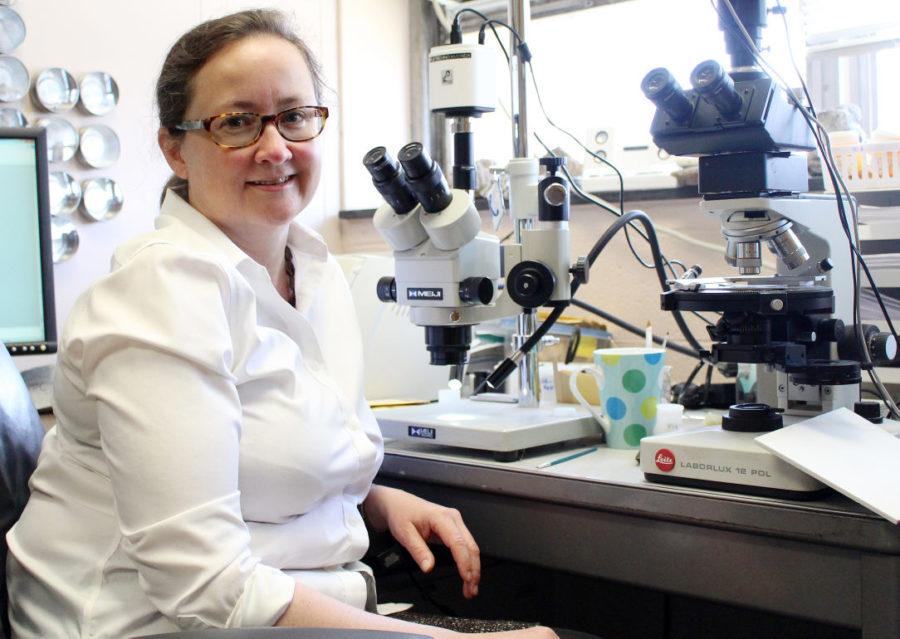Paleontology professor studies early marine life
Dr. Rebecca Freeman poses for a portrait at the University of Kentucky in Lexington, Ky. on Wednesday, April 13, 2016. Photo by Josh Mott | Staff.
April 13, 2016
Assistant professor Rebecca Freeman has been studying fossils for decades but said she is still amazed by the stories Kentucky’s natural landscape has to offer.
“It’s not the fossil itself, but the story it tells you,” Freeman said.
Freeman is in her fifth year at UK and previously lived in New Orleans where she taught at Tulane University.
Originally from Murray, Kentucky, Freeman said Kentucky’s landscape is ideal for her line or work, which is paleontology — the study of life on earth based in evidence provided by fossil records. She has also studies fossils in Utah, Nevada, Texas and Oklahoma.
Her interest in fossils and the narratives they tell about earth’s history is rooted in her childhood.
“Whenever I was a child I really liked to pick up rocks. I didn’t know that much about them but I just enjoyed picking them up,” Freeman said. “In Western Kentucky where I grew up there’s a lot of gravel, so I was always picking up pieces of gravel, and the gravel often has fossils in it.”
Freeman focuses on the study of marine life from the Ordovician period, and said Kentucky used to resemble a landscape like that of the Bahamas — widespread shallow water perfect for sustaining life.
“This area was a warm and subtropical sea,” said Freeman, noting that life on earth began in the ocean. “Life in the ocean is actually easier … life on land is a special adaptation.”
Some of the life forms she studies include trilobites, a fossil structure of an extinct group of marine arthropods that roamed the ocean for hundreds of millions of years before disappearing about 250 million years ago, long before humans roamed the earth.
Scientists estimate that earth is about 4.6 billion years old, and the modern human species has only been around for about 200,000 years. Freeman said thinking about this is “utterly amazing.”
“One of the analogies I like to use with my students is that if you think of earth’s history as from the tip of your nose to your fingertip, if you filed your fingernail, you could just wipe away human existence in terms of the time,” Freeman said. “Our timeline on the planet is less than the filing of a fingernail. That’s extremely sobering.”
Freeman said humans played a small part in earth’s history, and it’s likely that we will not be here forever. She said students should keep this in mind in light of Earth Day, which is April 22.
Freeman said education is the key to preserving the planet and preventing further pollution and destruction of natural habitats.
“The more you know about how the earth works … the more you can understand the issues,” Freeman said. “To educate oneself is the most important thing (students can do).”
































































































































































